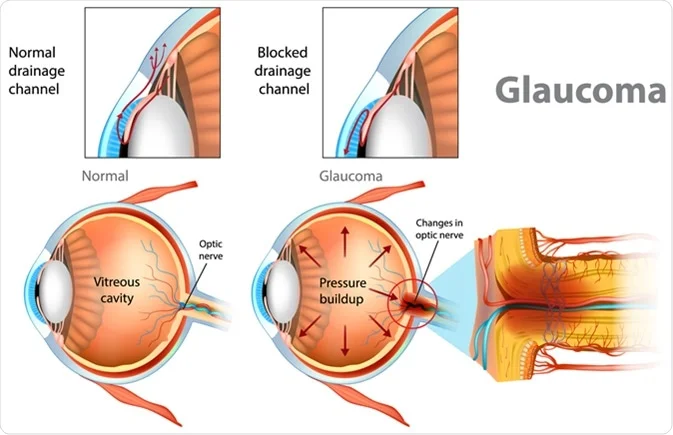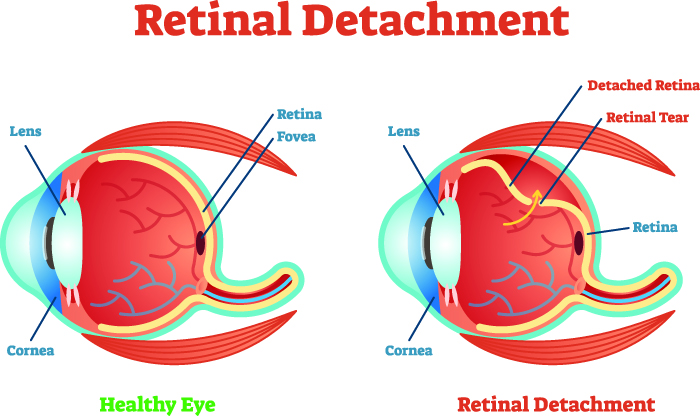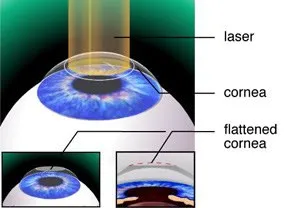Yes, there are several different types of glaucoma, each with its own characteristics, causes, and risk factors. Here are some of the main types of glaucoma:
1. Primary Open-Angle Glaucoma (POAG):
This is the most common type of glaucoma. It develops gradually and is often asymptomatic in the early stages. In POAG, the drainage angle of the eye becomes less efficient over time, leading to increased intraocular pressure (IOP) and damage to the optic nerve.
2. Angle-Closure Glaucoma (Closed-Angle Glaucoma or Narrow-Angle Glaucoma):
In this type, the drainage angle of the eye becomes blocked or too narrow, causing a sudden increase in IOP. This can result in acute symptoms such as severe eye pain, headaches, blurred vision, and halos around lights.
3. Normal-Tension Glaucoma (NTG) or Low-Tension Glaucoma:
In NTG, optic nerve damage and visual field loss occur despite normal IOP levels. The exact cause is not fully understood, but factors such as reduced blood flow to the optic nerve may play a role.
4. Secondary Glaucoma:
Secondary glaucoma develops as a result of another eye condition, injury, or underlying medical condition. It can occur due to factors like eye inflammation, trauma, tumors, certain medications (e.g., steroids), and diabetes.
5. Congenital Glaucoma:
Congenital glaucoma is present at birth or develops during infancy. It is often caused by improper development of the eye’s drainage structures. Symptoms include excessive tearing, light sensitivity, and enlarged eyes.
6. Pigmentary Glaucoma:
Pigmentary glaucoma occurs when pigment granules from the iris are released into the eye’s drainage system, causing blockages and increasing IOP. This type is more common in young to middle-aged adults.
7. Exfoliation Syndrome (Exfoliative Glaucoma):
Exfoliation syndrome is characterized by the accumulation of protein deposits on the lens and other parts of the eye. These deposits can block the drainage angle, leading to increased IOP and glaucoma.
8. Traumatic Glaucoma:
Traumatic glaucoma develops after an eye injury. The trauma can damage the eye’s drainage system or disrupt normal fluid circulation, causing increased IOP and glaucoma.
9. Uveitic Glaucoma:
Uveitic glaucoma occurs as a complication of uveitis, which is inflammation of the uvea (the middle layer of the eye). Inflammation can damage the drainage structures, leading to increased IOP.
10. Juvenile Glaucoma:
Juvenile glaucoma is a rare form of primary glaucoma that affects individuals under the age of 40. It may have a genetic component and can be more aggressive in its progression.
These are just some of the different types of glaucoma. Each type may require specific diagnostic and treatment approaches, and early detection is crucial for effectively managing the condition and preserving vision. If you suspect you have glaucoma or have any concerns about your eye health, it’s important to consult an eye care professional for a proper evaluation.
For more eye-related queries, Consult Dr. Vaidya at one of the Best Glaucoma treatments in Mumbai know more information visit our hospital at Dr. Vaidya Eye Hospital.




